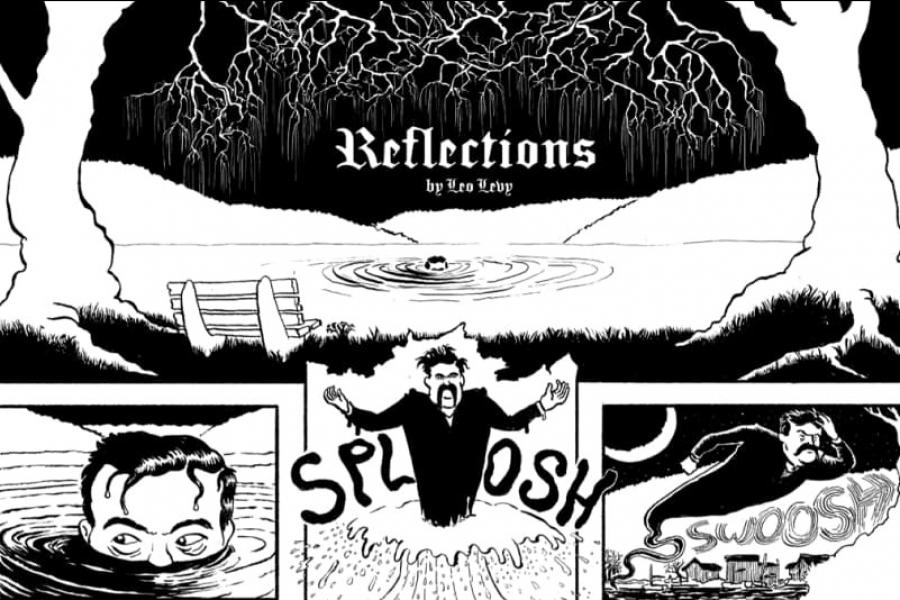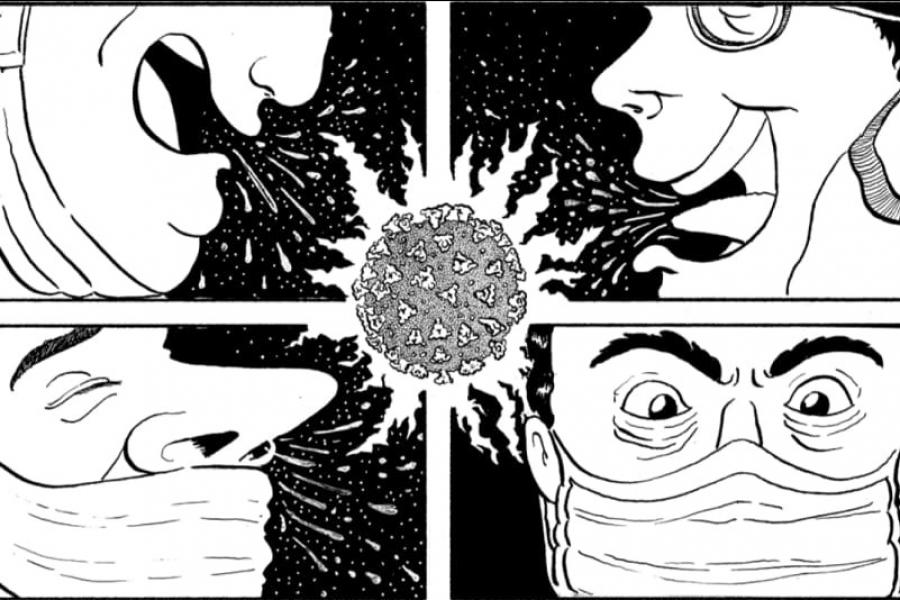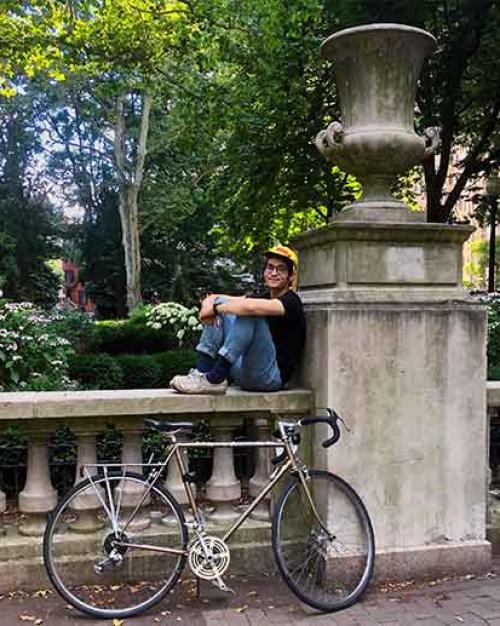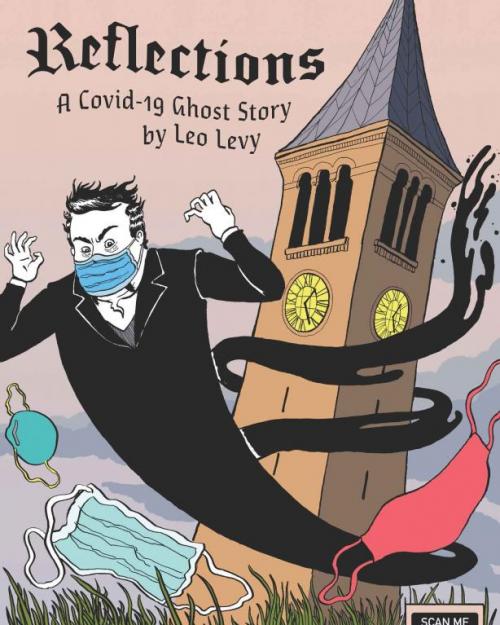What began as a class project exploring a fraught period of Ithaca history has transformed into a COVID-related comic that Leo Levy ’20, hopes can reach people with a lesson from the past and an accessible message about public health.
“Reflections” tells the story of Ithaca’s typhoid epidemic of 1903, which Levy discovered in 2020 during the pandemic, as he wandered around Ithaca’s gorges and stumbled upon Van Natta’s Dam, an abandoned grist mill located on Six Mile Creek. He wondered about its origins and started doing research on the ruin, realizing it might make the perfect final project for a Society for the Humanities seminar he was taking called Life in Ruins, taught by Lori Khatchadourian, associate professor of Near Eastern studies.
The mill was taken over in 1892 and transformed into a pumping station to provide the area with drinking water. But the water wasn’t treated properly and a typhoid epidemic seized the area in 1903, killing at least 82 people and sickening 1,400 of the city’s 13,000 residents, mostly young people.
“It’s a very dark history, but it felt familiar in terms of the reckless way that people were dealing with a public health crisis,” Levy said of his research into the epidemic. Public officials at the time of the 1903 epidemic refused to follow health precautions, ignored scientific evidence and blamed the epidemic on immigrant populations.
The final project he created for the Life in Ruins class was a comic that illustrates the story of the epidemic and the decision to abandon the mill and create a safer water system.
“We spent a lot of time in that class talking about how visual art can ethically represent ruination and loss,” Khatchadourian said. “Leo’s comics provide an inventive response to debates on the politics of representing suffering through images. He shows how the comic strip’s use of both illustrations and succinct text can convey powerful messages that are grounded in real human experiences — in this case the experience of a public health crisis.”
After graduation last spring, Levy traveled the country for a while with his girlfriend, eventually accepting an artist residency at ModNomad Studio's Casa Minka in Taos, N.M. where the story still stuck with him.
He decided to expand his comic, tie it to the COVID pandemic and tell it from the viewpoint of Theodore Zinck, a character well known in Cornell folklore as the owner of a downtown Ithaca bar favored by Cornell students in the late 1800s and early 1900s. Though that bar closed in the early part of the 20th century, there were other bars that bore the name until the last one closed in 1967. The annual International Spirit of Zinck’s Night is still celebrated by alumni every year on the third Thursday in October.
Having Zinck as a narrator for this new comic made sense, Levy said, because Zinck lost his daughter to the 1903 epidemic and committed suicide after her death. Zinck appears in the first and last panels of the comic, warning current Cornell students to wear masks and heed social distancing rules to keep the community safe during our current pandemic.
“I didn’t think making a dark comic was a helpful thing to do right now, flagellating ourselves more than this year has already done for us,” Levy said of telling a serious story through a comic. “But I want people to recognize at the end of this comic that the Covid precautions most of us have to take are a relatively minimal price to pay for public health.”
Creating a comic like this one is a massive undertaking, Levy said, involving days of research, then hours of story outlining and character creation before actually beginning to draw. Once the drawing starts, Levy creates multiple sketches of each character, location and item and then of each panel before illustrating the final product.
“Comics offer a unique and accessible way to interact with a story,” he said. Unlike a film, “comics have a lot fewer images and an interesting way to insert yourself into the storytelling process.”
Levy, who was a College Scholar in the College of Arts & Sciences, has been drawing comics ever since he was a kid, hanging out in Fat Jack’s Comiccrypt store in Philadelphia, Penn. with his best friend August and teaching his fellow middle-schoolers to draw superheroes.
“My mom tried to teach me French through reading the Asterix & Obelix and Tintin comics,” he said. “But that didn’t work so well.”
In high school he was able to intern with graphic designers and illustrators and completed a senior project illustrating Herman Hesse’s “Siddhartha.”
At Cornell, he entered as a comparative literature major, but realized he wanted to find a way to meld his love for putting words and pictures together. He also started studying German, spent a semester in Berlin and ending up completing a final College Scholar project that tied radical, progressive, Jewish-American activism at the start of the 20th century to the invention of comic book superheroes.
“The College Scholar program does an incredible job of trusting its students, giving you support to get access to the resources and experts relevant to your field and just encouraging you,” he said.
Levy’s next projects include illustrations for a number of social activist organizations — focused on regenerative agricultural and climate change among other concerns — and illustrations for a book of poetry.
“I would hope that my work makes this subject matter more accessible for people,” Levy said about his work related to climate change. “This is an unbelievably pressing issue and I want to be able to do what I do best to combat it.”
For alternative formats of this material please contact webaccessibility@cornell.edu







